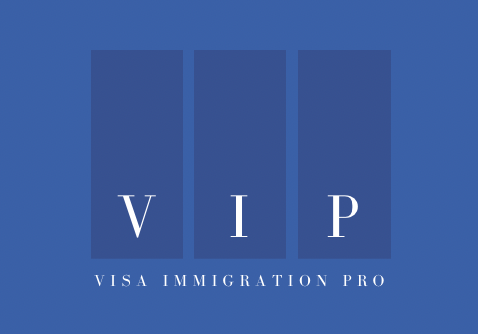Sponsoring Loved Ones for Visas or Green Cards
In the diverse tapestry of immigration, family-based immigration stands out as a cornerstone, representing the pursuit of unity and togetherness across borders. For many, the dream of building a life in a new country often intertwines with the desire to reunite with loved ones. This aspiration finds its manifestation through the intricate process of sponsoring family members for visas or green cards.
Family-based immigration serves as a pathway for U.S. citizens and lawful permanent residents (green card holders) to bring certain family members to the United States. This process enables families to reunite and build futures together in a land of opportunity. However, understanding the nuances of this system is crucial for navigating through the complexities and ensuring a smooth transition for all involved.
Understanding the Basics
At its core, family-based immigration revolves around the concept of sponsorship. U.S. citizens and green card holders can sponsor certain relatives to immigrate to the United States. The relatives are divided into two main categories: immediate relatives and family preference categories.
Immediate relatives include:
- Spouses of U.S. citizens
- Unmarried children (under 21) of U.S. citizens
- Parents of U.S. citizens (if the citizen is over 21)
These immediate relatives do not face numerical limitations on the visas available each year, making the process relatively faster compared to other family preference categories.
Family preference categories encompass:
- First Preference (F1): Unmarried sons and daughters of U.S. citizens
- Second Preference (F2): Spouses, minor children, and unmarried sons and daughters (21 and over) of green card holders
- Third Preference (F3): Married sons and daughters of U.S. citizens
- Fourth Preference (F4): Brothers and sisters of adult U.S. citizens
Each category has its own waiting period and quota, which can vary based on factors such as the country of origin and the applicant’s relationship to the sponsor.
The Application Process
Initiating the family-based immigration process involves several steps, starting with the sponsor filing a petition on behalf of the relative with the United States Citizenship and Immigration Services (USCIS). The sponsor must prove their relationship to the intended immigrant and demonstrate their ability to financially support them once they arrive in the United States.
Once the petition is approved, the relative typically undergoes a visa application process through either consular processing (if outside the United States) or adjustment of status (if already in the country). Consular processing involves attending an interview at a U.S. embassy or consulate in their home country, while adjustment of status involves filing additional forms with USCIS for those already residing in the United States.
Challenges and Considerations
While family-based immigration offers a pathway to reunification, it’s not without its challenges. Lengthy processing times, bureaucratic hurdles, and changing immigration policies can create uncertainty and frustration for applicants and sponsors alike. Additionally, certain family preference categories face substantial backlogs, leading to years-long waiting periods before visas become available.
Moreover, navigating the financial requirements of sponsorship can pose challenges for some sponsors, especially if they have limited resources. Demonstrating the ability to provide financial support is a crucial aspect of the application process and may require careful planning and documentation.
Family-based immigration serves as a beacon of hope for families separated by borders, offering the promise of reunification and shared futures. While the process may seem daunting, understanding the basics and seeking guidance from immigration professionals can help alleviate stress and streamline the journey toward bringing loved ones together.
As we continue to navigate the evolving landscape of immigration policy, it’s essential to uphold the values of compassion, empathy, and inclusivity that lie at the heart of family-based immigration. By honoring the bonds that unite us across cultures and continents, we can build stronger, more resilient communities rooted in the shared experience of family and belonging.
Tips for Successful Adjustment of Status Applications
Navigating the adjustment of status process can be complex and daunting. To ease this journey, here are some valuable tips for ensuring a successful adjustment of status application within the family-based immigration framework.
- Understanding Eligibility Criteria:
Before initiating the adjustment of status process, it’s crucial to ensure that you meet the eligibility criteria. Generally, eligibility is based on familial relationships, such as being the spouse, parent, child, or sibling of a U.S. citizen or lawful permanent resident. Additionally, applicants must have entered the United States legally and not violated the terms of their visa status. - Gather Necessary Documentation:
Documentation plays a pivotal role in supporting your adjustment of status application. Gather essential documents such as birth certificates, marriage certificates (if applicable), passports, and evidence of the familial relationship with the sponsoring relative. Additionally, include documents demonstrating your continuous presence in the United States and any relevant forms, such as Form I-485 (Application to Register Permanent Residence or Adjust Status) and Form I-130 (Petition for Alien Relative). - Stay Informed About Policy Changes:
Immigration policies are subject to change, so it’s essential to stay updated on any alterations that may impact your application process. Regularly check the U.S. Citizenship and Immigration Services (USCIS) website for updates, consult with immigration attorneys, or seek guidance from reputable immigration organizations. - Seek Legal Assistance if Needed:
While it’s possible to navigate the adjustment of status process independently, seeking legal assistance can significantly enhance your chances of success. Immigration attorneys specialize in navigating the intricacies of immigration law and can provide personalized guidance tailored to your specific circumstances. - Adhere to Timelines and Deadlines:
Timeliness is crucial when submitting your adjustment of status application. Missing deadlines or failing to respond to USCIS requests promptly can result in delays or even denial of your application. Maintain a clear understanding of the required timelines and ensure all documentation is submitted within the specified deadlines. - Prepare for the Interview:
As part of the adjustment of status process, applicants are typically required to attend an interview with USCIS. Prepare thoroughly for this interview by familiarizing yourself with the questions that may be asked, reviewing your application and supporting documents, and seeking guidance from your attorney if necessary. - Maintain Clear Communication:
Throughout the adjustment of status process, maintain clear communication with USCIS and any other relevant parties. Notify USCIS of any changes in your circumstances, such as address changes or changes in marital status, to ensure that your application remains up to date. - Remain Patient and Persistent:
The adjustment of status process can be lengthy and complex, often requiring patience and persistence. Understand that delays may occur, but remain steadfast in your pursuit of lawful permanent resident status. Stay proactive, follow up on your application’s progress, and be prepared to address any issues that may arise.
Successful adjustment of status within the family-based immigration framework requires thorough preparation, adherence to guidelines, and proactive engagement throughout the process. By understanding the eligibility criteria, gathering necessary documentation, staying informed about policy changes, seeking legal assistance if needed, adhering to timelines, preparing for the interview, maintaining clear communication, and remaining patient and persistent, you can navigate the adjustment of status process with confidence and increase your chances of achieving lawful permanent resident status in the United States.


